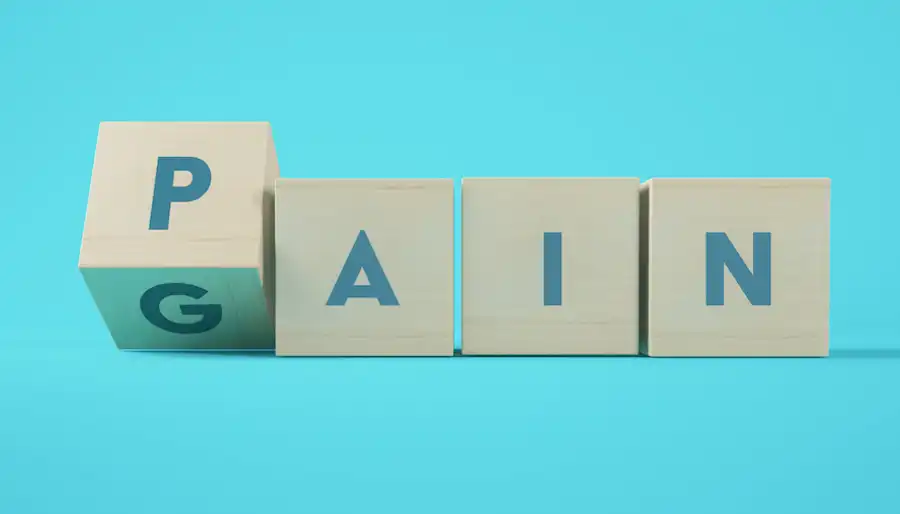The (rubbish) theory of No Pain No Gain
10 May 2023

We have all heard the saying, ‘No Pain, No Gain!’ This has never sat easy with me, and I will explain why here.
Pain (located anywhere in the body from head to toe) is the primary symptom I deal with in the clinic, so let’s briefly look at the different types of pain.
Pain can be dull, sharp, achy, or nagging, to name the most common ways I hear it described in the clinic.
Acute pain is defined as being present for 3 months or less, and chronic pain for 3 months or more. Chronic pain can come and go, symptoms don’t have to be constant to be defined as chronic.
Different structures in the body can cause pain. The most common are muscles, nerves, joints, ligaments and tendons, and the cause of the pain must be correctly diagnosed by a medical professional, as then the correct treatment can be administered, as well as rehabilitation exercises.
Pain tells us that something is not as it should be. It’s a negative stimulus and not one we should ignore.
Some types of pain are momentary – you stub your toe, which hurts. Other types of pain persist. Pain can be a sudden arrival or gradual build-up.
We must pay attention and listen to the messages from our bodies. One thing I always ask my patients is how much pain they are in out of 10. Rating pain on a pain scale (0 being no pain and 10 being too much pain to bear) enables me to understand exactly how my patient is feeling. Low-level pain on the pain scale should still not be ignored.
When left, this low-grade niggle can become more significant and increasingly painful, causing loss of function, increased recovery time, and the potential for other physical structures to become symptomatic.
Often we assume that we have to have done something to have caused our pain. However, being inactive can cause a lot of physical pain. Sitting behind a desk for hours seems risk-free for our physical bodies.
However, sitting static for all those hours will tighten muscle groups, stiffen joints, and could lead to headaches, to name a few issues I regularly see in desk-based patients.
As is always the case, prevention is better than cure. Our body is designed to move regularly, and ensuring regular movement throughout the day is excellent for our joints, muscles and minds.
Pushing through pain is NEVER good for the body. We will be causing more damage and risk injuring other structures. The mentality of pushing through when exercising is so dangerous for the body. I have seen some massive injuries that could have been avoided if only my patients had stopped when they received the first pain signals from their bodies.
Some will be forever dealing with the effects of that determination to push through because of no pain, no gain, right?
The only time I will EVER say to a patient that they must push through the pain is when rehabilitating joints post-replacement. There is no other situation where I will encourage a patient to push through.
In essence, the physical body is to be respected, nurtured and treated like the incredible bit of kit it is.
Very few of us would continue to drive our cars around, ignoring a flashing beeping warning light telling us something is wrong. But most of us ask our body to continue to operate through low levels of pain daily.
Brushing off those warning signals as something transient or annoying. Please don’t do that – listen to your body. After all, we only get one.
Top tip - if you are experiencing pain 5/10 or more, seek professional medical attention. Don't wait for the problem to get worse.